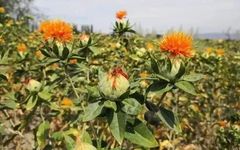The Red Dye from Safflower
Red is a color of passion and brightness, symbolizing auspiciousness and happiness. In ancient times, red dyeing often utilized three plants: Honghua (Safflower), Qinci (Madder), and Sumac. Honghua
Honghua


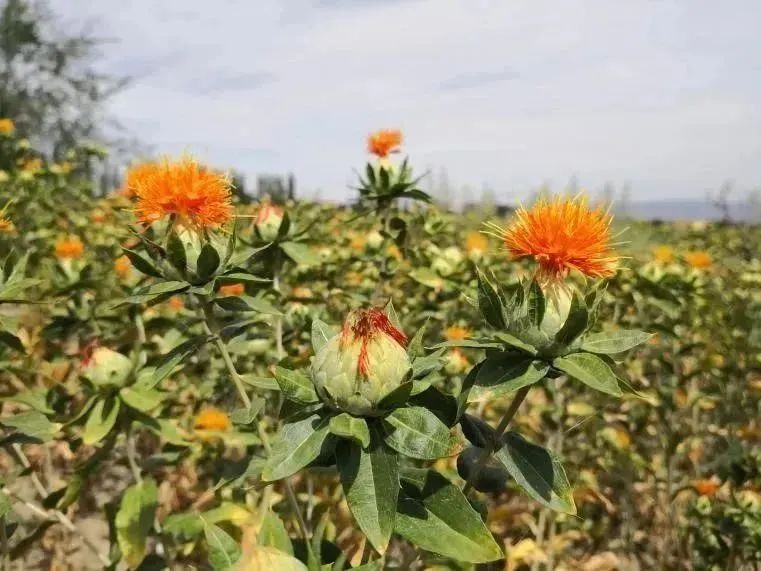

 (The stem is erect, branching in the upper part, with lanceolate or elongated oval leaves in the middle and lower parts, which may be serrated or entire, with spiny tips. The leaves are hard, leathery, and glossy. The flower heads are numerous, arranged in an umbrella-like inflorescence at the top of the stem. The small flowers are red or orange and bisexual.)It is an annual herb of the Asteraceae family, flowering from May to July, and contains carthamin, which can be used as a red dye for textiles.Safflower blooms in early summer, with a spiny, globular calyx beneath the flowers. After the sun rises completely, the dew in the calyx evaporates, causing the petals to close; therefore, it must be harvested at dawn.
(The stem is erect, branching in the upper part, with lanceolate or elongated oval leaves in the middle and lower parts, which may be serrated or entire, with spiny tips. The leaves are hard, leathery, and glossy. The flower heads are numerous, arranged in an umbrella-like inflorescence at the top of the stem. The small flowers are red or orange and bisexual.)It is an annual herb of the Asteraceae family, flowering from May to July, and contains carthamin, which can be used as a red dye for textiles.Safflower blooms in early summer, with a spiny, globular calyx beneath the flowers. After the sun rises completely, the dew in the calyx evaporates, causing the petals to close; therefore, it must be harvested at dawn.
Safflower has a short growth period and strong adaptability, with a developed taproot (which can grow deeper than 2 meters underground), exhibiting drought resistance, cold resistance, and salt-alkali tolerance, making it suitable for cultivation in northern and northwestern China.
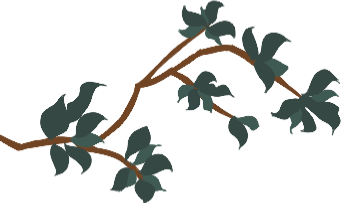
 1. Dyeing Value
1. Dyeing Value
Safflower’s color outshines a thousand flowers, even the blood of a gorilla is not as vivid.
It dyes light silk, which is not as precious; the ancients valued frugality and admonished extravagance.
—— “Safflower” by Li Zhong, Tang Dynasty
Red was a popular color during the Sui and Tang dynasties, and this poem vividly depicts the bright color presented by safflower.
Before the invention of synthetic dyes, safflower was the primary dye for true red in ancient times and one of the most important red dye materials in the world. After being introduced to China by Zhang Qian during his mission to the Western Regions, safflower was processed into red dye due to its bright color and appealing luster, mainly used for dyeing textiles and in cosmetics. The “Bencao Tujing” records that “its flowers are dried to dye true red and also used for rouge.”
Safflower contains both red and yellow pigments, and if not separated, the color will not be pure. Due to the characteristic that safflower’s red pigment is easily soluble in alkali but not in acid, the ancients used the “flower-killing method” to extract safflower’s red pigment. This method had already spread to Japan during the Sui and Tang dynasties. The Ming Dynasty’s “Tiangong Kaiwu” mentions that to make dye, one must first create safflower cakes: “Pick safflower with dew at dawn, pound it well, wash it with water, and squeeze out the yellow juice using a cloth bag. Then pound it again with sour millet or rice wash. Wash and squeeze again to remove the juice, cover it with qinghao (Artemisia) overnight, shape it into thin cakes, and dry in the shade for storage. The dye master knows the method, and I, Zhu Kongyang, call it scarlet.”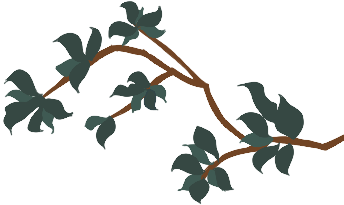
 2. Medicinal Value
2. Medicinal Value
In ancient literature, safflower is often referred to as Honglanhua (Red-Blue Flower) due to its red flowers and blue-like leaves, later abbreviated to Honghua (Safflower). The “Tujing Bencao” also states: “Honglanhua is safflower.”
(1) Medicinal UseSafflower in ancient China was mainly used as a dye or for medicinal purposes; the seedlings, seeds, and the prepared rouge also have medicinal records. The flowers used as medicine, which we refer to today as Honghua (Safflower), are pungent, dispersing, and warming, “the red color enters the blood,” serving as a key agent for promoting blood circulation and removing blood stasis. It is adept at regulating menstruation, thus commonly used for dysmenorrhea and amenorrhea caused by blood stasis. It can also be used for abdominal pain due to stasis, chest pain, stabbing pain in the chest and hypochondria, masses and lumps, trauma, sores and swelling, heat depression with blood stasis, and dark-colored rashes.The seedlings of safflower can be applied externally to treat edema, while the seeds can be taken internally to treat sores and swelling. The rouge can be dropped into the ear to treat children’s ear diseases. The “Zhenglei Bencao” states: “The seedlings are crushed and applied to treat edema. The seeds, when swallowed in several pieces, can prevent sores from appearing. The rouge is for children’s ears, to be dropped into the ear.”Safflower seeds can treat women’s stroke; the “Zhengyuan Guangli Fang” states: “To treat women’s stroke and blood heat with thirst, take five large safflower seeds, slightly boil and crush, take half a large spoon in the morning, boil with water to obtain seven portions, remove the dregs, and swallow it carefully.”
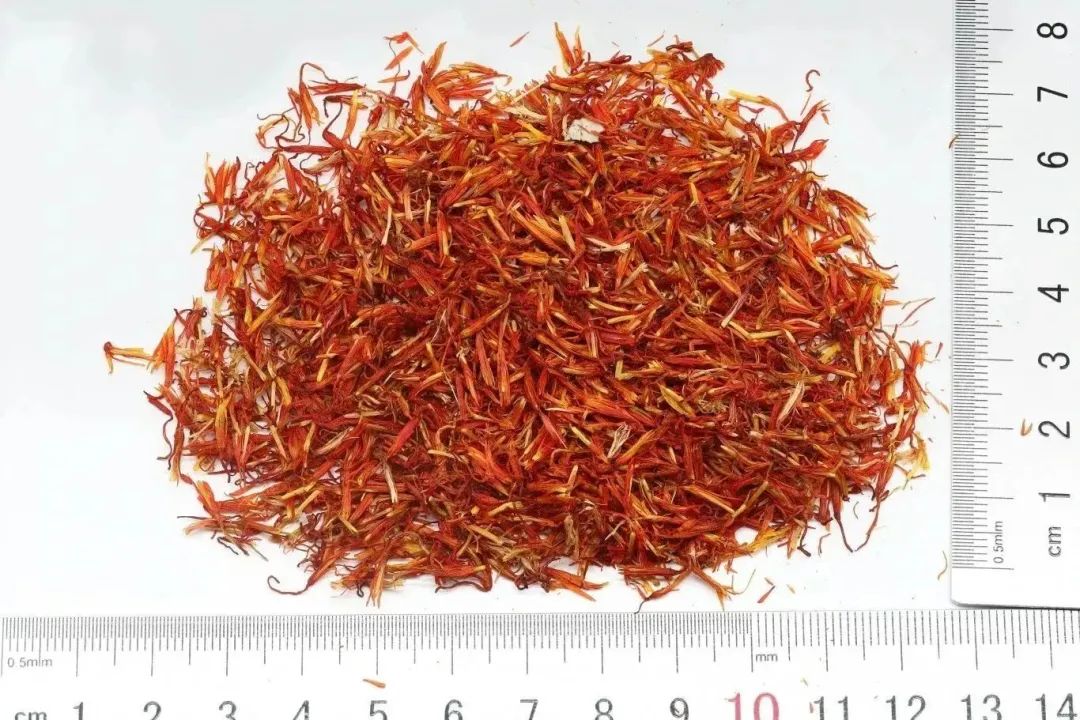
Safflower slices
(2) Processing
Historical records of safflower processing methods include wine processing, juice extraction for internal use, etc. For example, the “Haishang Fang” and “Wai Tai Mi Yao” have records of safflower being “crushed to extract juice.” The method using wine as an auxiliary material is more commonly used, as wine processing enhances safflower’s blood-activating and stasis-removing effects. This can be subdivided into six categories: wine boiling, wine washing, wine frying, wine soaking, wine steaming, and wine spraying. Nowadays, wine processing of safflower is no longer considered the orthodox method; the 2020 edition of the “Chinese Pharmacopoeia” records that safflower should be harvested in summer when the flowers change from yellow to red, and then dried in the shade or under the sun, using the raw product for medicinal purposes.
(3) Cultivation
After safflower was introduced to China via the Silk Road, its cultivation area expanded continuously, with recorded production areas including Henan, Jiangsu, Hunan, Anhui, Sichuan, Shandong, Shaanxi, and Zhejiang. Currently, the most famous varieties are the “Chuan Honghua” (Sichuan Safflower) and “Huai Honghua” (Henan Safflower), while Xinjiang is rapidly becoming a new “hometown of safflower” in recent years.
 3. Other Values
3. Other Values
In addition to its medicinal and dyeing uses, the tender leaves and seedlings of safflower are edible. The oil extracted from safflower seeds can be used in salads and was also used as ancient wheel lubricant and candle wax. The “Bencao Gangmu” records: “The young leaves and seedlings can also be eaten… The seeds are harvested in May, cleaned, crushed, and boiled with vinegar to mix with vegetables, which is extremely delicious. They can also be used as wheel grease and candles.” The Ming Dynasty’s “Bencao Huiyan” records: “The seeds are white and round like small beans; crush and boil their juice, mix with vinegar for a delicious vegetable dish. Steamed and crushed for oil, they can also be used for candles.”
Source: Pharmacy Department Zhiyuan
Editor: Promotion Department Gao Hongxin
Proofreader: Promotion Department Hu Jia
Reviewed by: Pharmacy Department Yue Baosen
Previous Issues Hospital News
The 16th Science and Technology Conference Award Ceremony of Xi’an Traditional Chinese Medicine Hospital
Spiritual Civilization
Let the civilization of Traditional Chinese Medicine bloom brilliantly
Heartwarming Stories
You are the second mother of my child!
Special Treatments
Spring is the right time for growth; don’t miss out!
01Main Hospital: No. 69 Fengcheng 8th Road, Weiyang District, Xi’an, Shaanxi Province
One-stop Service Center: (029) 89626201
02Qujiang Branch: No. 70 Qujiang Avenue, Yanta District, Xi’an, Shaanxi Province
One-stop Service Center: (029) 81219399

